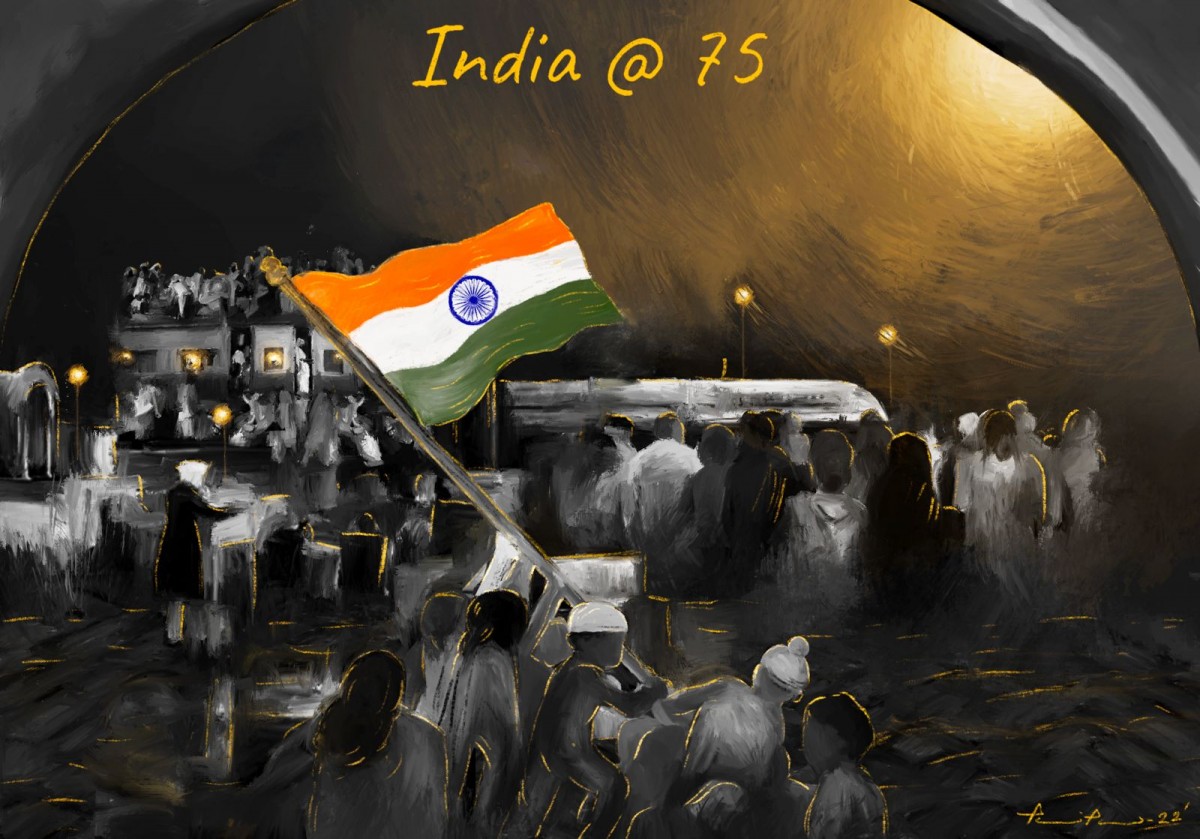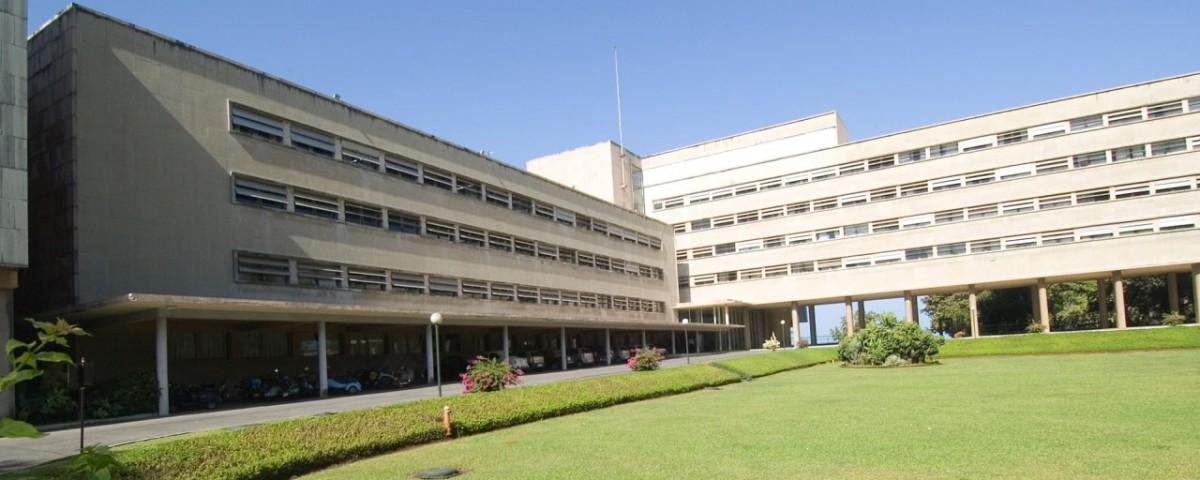The crossroads facing Indian science has changed in the last 75 years – The Wire Science

As the country waves its flag to celebrate India’s 75th anniversary of independence, it’s also time to consider it. What did India’s founders and citizens dream of, how did India live, what were our challenges and successes?
wire‘s reporters and contributors speak not only of the trauma of the time, but also of the hopes of the Indians, as seen in their personal accounts, culture, economy and science. How did the modern state of India come to be? what does the flag stand for? How have literature and cinema addressed partition trauma?
Follow us over the next few days to get the full picture of India@75.

In evaluating Indian science, we may choose to consider only what is measurable. For example, you can list spending on science as part of GDP, count the number of PhDs created each year, or count citations to Indian papers in the scientific literature.
In almost all such measures, it’s a complicated situation. India spends about 0.7% of its GDP on research, compared to China (over 2%) and Singapore (1.9%). We have her fourth highest number of PhDs in the world, which has to be weighed against the sheer size of our population. We have her third highest number of scholarly publications across the country, after the United States and China. However, their impact and overall quality are considerably less than the bald count suggests.
Focusing only on what you can measure avoids another set of questions. How does the ‘scientific temperament’ reflect in people’s behavior? A nuanced understanding of India’s past achievements uncritically states that ancient Indian texts contain all of modern science. Is attitude superseded?
Pre-independence Indian science was largely dominated by figures such as Srinivasa Ramanujan, C.V. Raman, Jagadish Chandra Bose and Meghnad Saha. The public would find it difficult to name any post-independence scientist, with the exception of Homi Baba and Vikram Sarabhai. I think of myself as a builder. The public sees former President Abdul Kalam as a scientist, but he was above all an inspirational administrator.
Highlights of post-independence Indian science
Here are some highlights of post-independence Indian science and the names of some of the scientists who contributed to it. It is necessarily biased to my own interests, does not claim to be fair or exhaustive, and omits many names of similar stature. Use for That point is only reinforced by adding the name of the person I missed.
Obaid Siddiqui was recruited by Baba to the Tata Fundamental Research Institute (TIFR, Mumbai) to initiate research in molecular and developmental biology in India and to establish the National Center for Biological Sciences (NCBS) in Bangalore. These broad areas of modern biology are now well known throughout India. His CNR Rao at his Center for Advanced Scientific Research Jawaharlal Nehru in Bengaluru promotes research in materials chemistry and science in departments across India and makes internationally influential scientific contributions.

An internationally known group across multiple disciplines of chemistry, not only in the chemistry departments of universities such as the University of Hyderabad, the University of Delhi and the IIT University Kanpur, but also in research institutes such as the IACS in Kolkata and the Indian Institute of Science in Bengaluru. is established. The group surrounding his S. Chandrasekhar at the Raman Institute in Bangalore became internationally renowned in the field of liquid crystals.
Govind Swarup and Jayant Narlikar are important figures in Indian astronomy and astrophysics, a field in which Indian science has an international reputation. By the 1970s and his 80s, the School of Mathematics had established itself as a world leader, with centers not only in TIFR and Chennai, but also in several college and university settings. The names of MS Narasimhan and CS Seshadri are associated with the development of influential Indian mathematics schools in the field of algebraic geometry.
The Indian Institute of Statistics (ISI), founded by PC Mahalonobis, has campuses in Kolkata, Delhi and Bengaluru and has trained a large number of statisticians and pure and applied mathematicians over the years. His CR Rao, retired from his ISI in Kolkata, is the most prominent of the living statisticians. India’s Theoretical Computer His most important breakthrough in science was led by his Manindra Agrawal at IIT Kanpur.
In physics, beginning in the 1980s and 90s, groups led by TIFR and the Indian Institute of Science in India, along with many other institutions, have made important contributions in the field of condensed matter physics. IISc physicist TV Ramakrishnan is an internationally renowned figure. Deepak Dhar at TIFR and later at his IISER was recently awarded the Boltzmann Medal, the highest international award in statistical physics.
Particle physics has been India’s traditional strength, both experimentally and theoretically. String theorist Ashok Sen, who worked at TIFR and later at the Harishchandra Institute in Phrayagraj, played a major role in putting the Indian city on the global research map of fundamental physics.
What I mean is that the post-independence peak of individual excellence in Indian science was considered to have special significance in the world. Leaders have helped India develop certain scientific disciplines that have earned it an international reputation. In particular, IIT Kanpur’s excellent science department, like Universities such as Delhi University, Madras University, BHU, JNU, AMU, etc., has produced some excellent students, including many I have named here. produced.
Apart from this, the contribution of those who were born in India or trained in India but who worked mainly abroad is immeasurable. This includes not only Nobel laureates S. Chandrasekhar, Har Gobind Khurana and V. Ramakrishnan, but also Abel laureates SRS Varadhan, Turing laureates Raj Reddy, Godel laureates Sanjeev Arora and Madhu Sudan. will be Extending this assessment of outstanding contributions to the Indian diaspora would further swell this list.
systematic challenge
But Indian science is also far from its global frontier. Some scientists end up largely repeating the same measurements on a series of materials that differ slightly from each other. (My physics teacher coined the term “karma physics.” One repeats what one’s Ph.D. Repeat in a predetermined manner.Another related term is “piggyback science”), which refers to the publication of minor variations on influential papers or trends from abroad.)
Both of these examples abound throughout science of their inability to take scientific risks and think independently. , we can point to a group conducting research of questionable quality.
The government-funded research ecosystem is in serious trouble because it still does not understand how to pay early-career researchers on time. One reason for this is historical. Smaller, relatively financially independent, government-supported research institutions have traditionally thrived at the expense of university-based research, but this situation is slowly improving. But the bigger problem is structural, either because the government’s science departments themselves are underfunded or because these departments are surrounded by multiple layers of bureaucracy.
For most government-funded projects, the first year’s funding does not keep up with subsequent budget amounts. In some cases, the first funding installment is also the only thing a researcher will receive before the project ends.
Full-time jobs at universities and state-funded institutions are drying up. (The Department of Physics at the University of Delhi last hired staff about 12 years ago.) The situation in university departments across the country is equally dire. Education is often sustained by an ever-decreasing number of permanent faculty members that are balanced by an annual increase in contract numbers. A well-known Delhi university sends only full-time physics teachers, supplementing about 25 temporary teachers.

The general tendency to self-censor views that overlap with politics is disturbing. Such censorship is reinforced by widely formulated “rules of conduct” that suppress any criticism of government policy. It is the rare scientist to publicly comment on scientific issues of public relevance.
The Indian Academy of Sciences (of which there are three) has also not been particularly outspoken. In recent years, restrictions on holding international conferences have increased. Visas to attend scientific conferences are denied to researchers simply based on their country of origin.
Corruption in the appointment of school teachers, university lecturers, and university professors is only occasionally reported in the media. However, it is a reality in most, if not all, states of India. Government-appointed selection committees and members of the boards of institutions increasingly appear to be chosen on the basis of political affiliation rather than insight into science and its practice.
Even setting aside more outlandish claims, funding a policy that assigns special importance to cattle and their natural products effectively treats such research on a par with other more general scientific disciplines. The reason is political, not scientific.
It is now increasingly common to hear from politicians that ancient Indian texts pre-empted Western scientific norms. That is, our efforts should be directed solely to their discovery and elucidation. Such nativist views hamper attempts to truly understand what Indian scientists and mathematicians have achieved in the past.
A country’s scientific progress must be viewed in its priorities, social and other contexts. The level of representation from disadvantaged caste groups is still very low in Indian science.The number of women at faculty level in Indian scientific institutions is low. When it comes to issues of equity, the more privileged and well-funded scientific institutions perform far worse than the universities.
in the future?
For a country with enormous existing levels of inequality and division across castes, religions, communities, languages and cultures, achieving what we have had since independence is commendable. Indeed, we have come a long way. But what about the future?
We can move forward towards better integration with global science with an Indian flavor.We can highlight these issues that are particularly relevant to India. These include our own series of “ wicked” problem.
We can move towards having a more inclusive system. In light of the current employment crisis, we have been able to explore new ways in which scientific training can support and encourage entrepreneurship.
On the one hand, the emphasis on objectivity, rigor and scientific method has been replaced by an attitude of irrelevance of evidence, further weakening our institutions with neglect, corruption, lack of investment and heavy-handed control. may cause them to regress.
Seventy-five years after independence, it’s a good time to not only look back, but also look forward to the future. What is clear is that we are at a different crossroads than when our journey as a country first began.
G.autam I. Menon is Professor at Ashoka University Sonepat and Institute of Mathematical Sciences, Chennai. The views expressed here are his and do not represent his institution.













